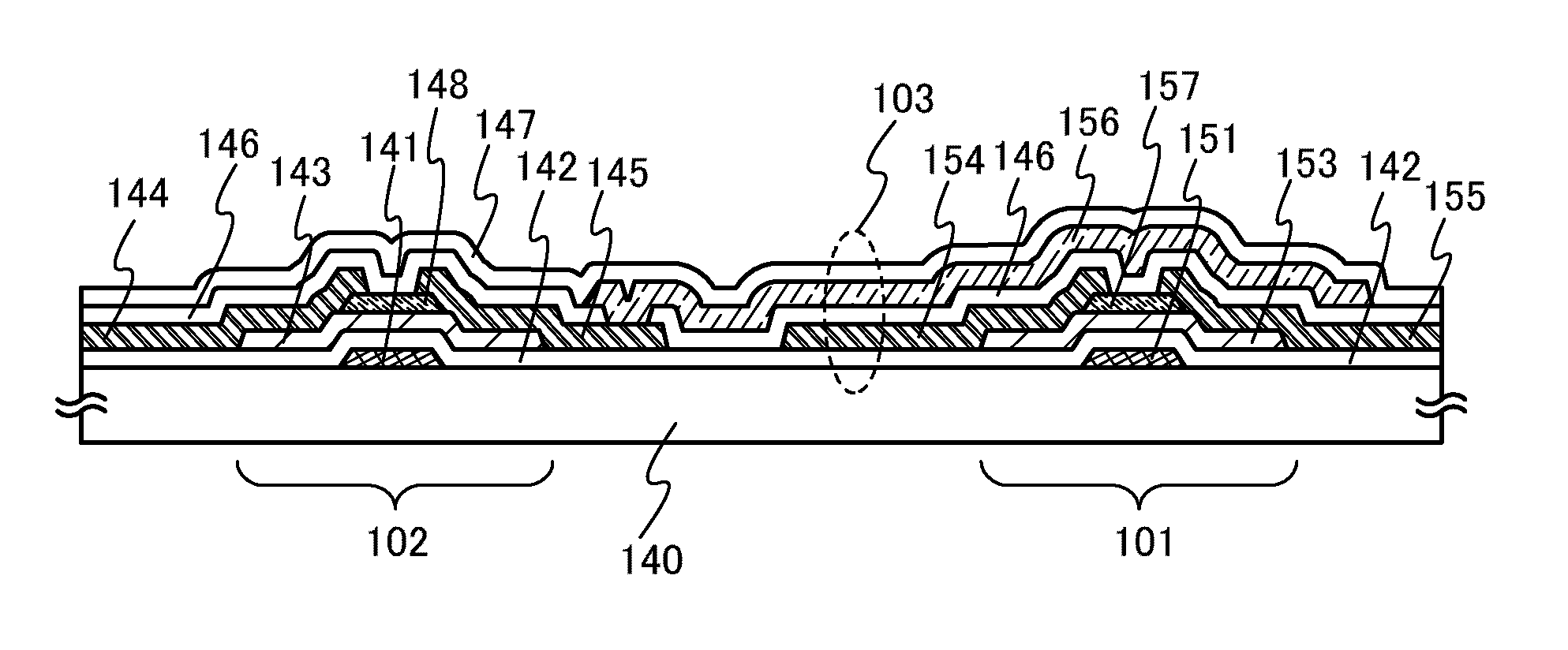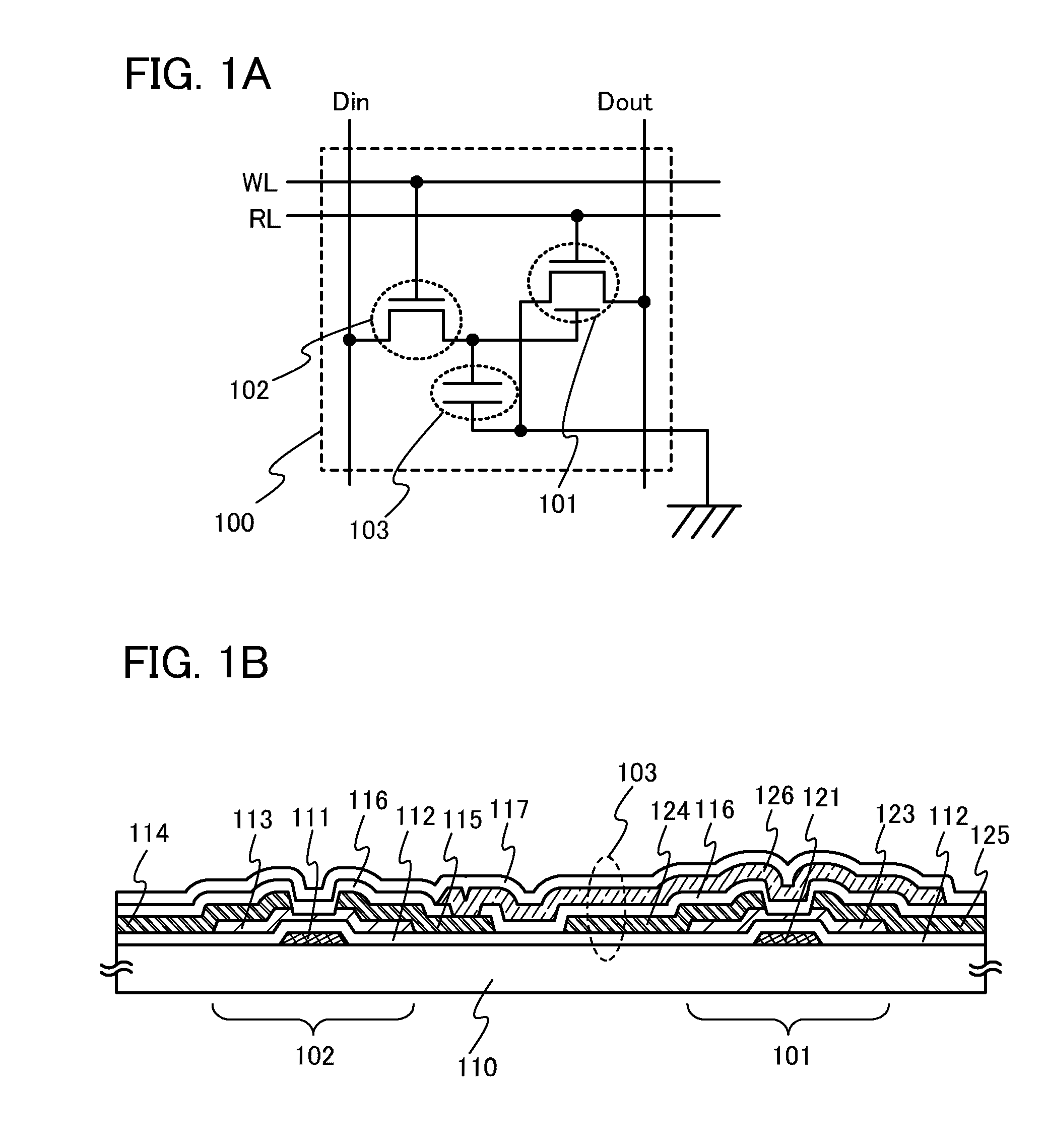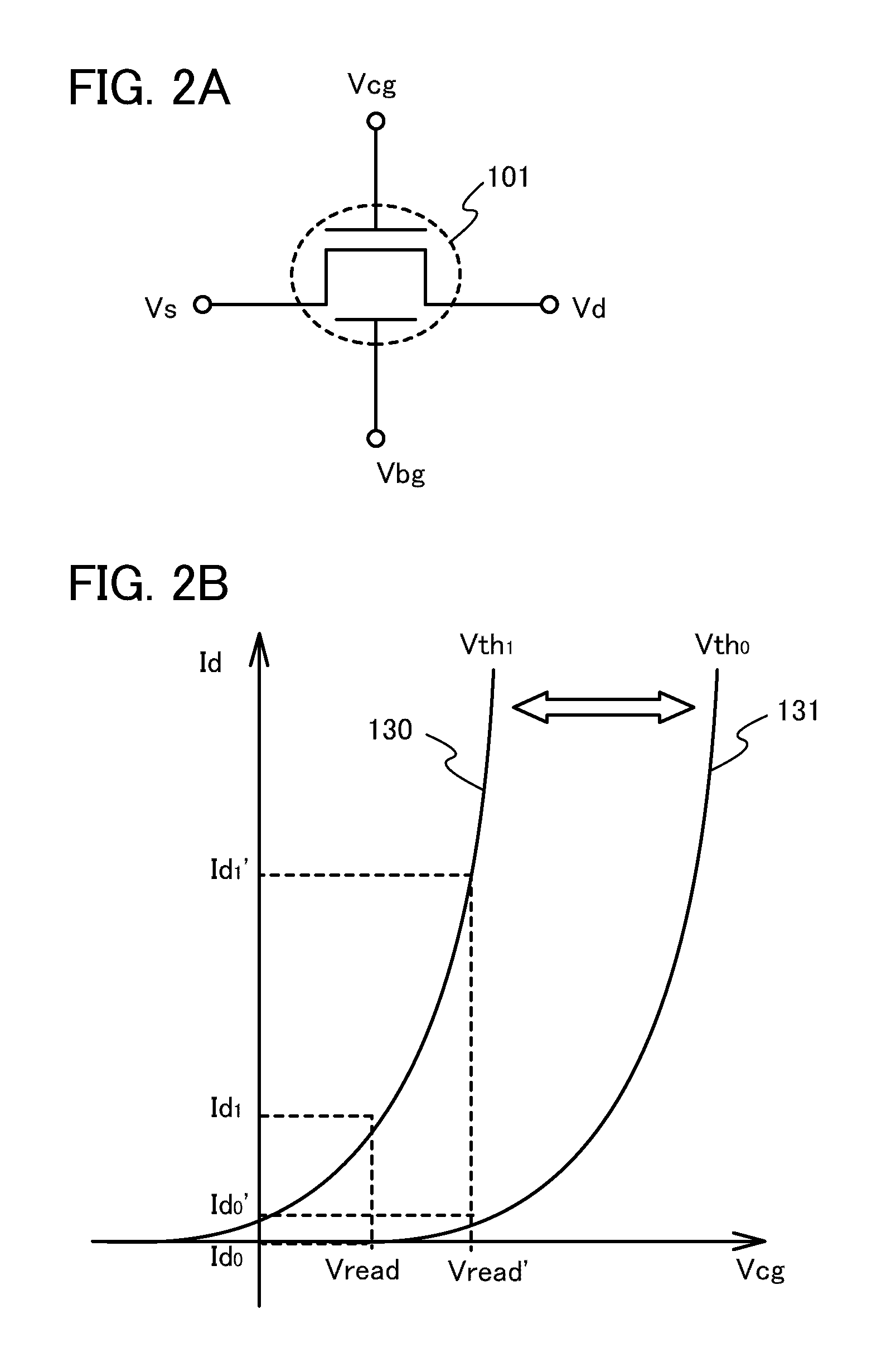Memory device and semiconductor device
a memory device and semiconductor technology, applied in semiconductor devices, instruments, climate sustainability, etc., can solve the problems of high power consumption of flash memory as a memory device, high power consumption of flash memory, etc., and achieve the effect of increasing the number of rewriting times
- Summary
- Abstract
- Description
- Claims
- Application Information
AI Technical Summary
Benefits of technology
Problems solved by technology
Method used
Image
Examples
embodiment 1
[0049]FIG. 1A illustrates one example of a circuit diagram of a memory cell which is the minimum unit of a memory device of the present invention. A memory cell 100 in FIG. 1A includes a transistor 101 which functions as a memory element and a transistor 102 which can control the supply of a potential to a second gate electrode of the transistor 101 and functions as a switching element. Further, a memory cell may be include a capacitor 103 for holding the potential of the second gate electrode of the transistor 101.
[0050]Note that the memory cell 100 may further have another circuit element such as a diode, a resistor, or an inductor as needed.
[0051]The transistor 101 which functions as a memory element has a first gate electrode, the second gate electrode, a semiconductor film located between the first gate electrode and the second gate electrode, a first insulating film located between the first gate electrode and the semiconductor film, a second insulating film located between th...
embodiment 2
[0106]In Embodiment 2, an example of a structure of a memory device including a plurality of memory cells and a driving method thereof will be described.
[0107]As an example, FIG. 5 illustrates a circuit diagram of a cell array in a NOR-type memory device in which a plurality of memory cells 300 is arranged in matrix. The description of a structure of the memory cell 100 in Embodiment 1 can be referred to for a structure of each memory cell 300 included in the memory device in FIG. 5.
[0108]Specifically, the memory cell 300 includes a transistor 301 which functions as a memory element and a transistor 302 which functions as a switching element, and which can control the supply of a potential to a second gate electrode of the transistor 301. In addition, the memory cell 300 may include a capacitor 303 for holding the potential of the second gate electrode of the transistor 301. The memory cell 300 may further include another circuit element such as a diode, a resistor, or an inductor, ...
embodiment 3
[0170]A channel-etched bottom-gate transistor is given as an example, and a manufacturing method of a memory device according to one embodiment of the present invention will be described. Note that in Embodiment 3, the case where an oxide semiconductor film is used as an active layer in both of a transistor which functions as a memory element and a transistor which functions as a switching element is given as an example for description.
[0171]As illustrated in FIG. 10A, a gate electrode 401 and a gate electrode 402 are formed over a substrate 400 having an insulating surface.
[0172]Although there is no particular limitation on a substrate that can be used as the substrate 400 having an insulating surface, the substrate needs to have heat resistance high enough to withstand at least heat treatment to be performed in a later step. For example, a glass substrate formed by a glass fusion process or a float process can be used. In the case where a glass substrate is used and the temperatur...
PUM
 Login to View More
Login to View More Abstract
Description
Claims
Application Information
 Login to View More
Login to View More - R&D
- Intellectual Property
- Life Sciences
- Materials
- Tech Scout
- Unparalleled Data Quality
- Higher Quality Content
- 60% Fewer Hallucinations
Browse by: Latest US Patents, China's latest patents, Technical Efficacy Thesaurus, Application Domain, Technology Topic, Popular Technical Reports.
© 2025 PatSnap. All rights reserved.Legal|Privacy policy|Modern Slavery Act Transparency Statement|Sitemap|About US| Contact US: help@patsnap.com



